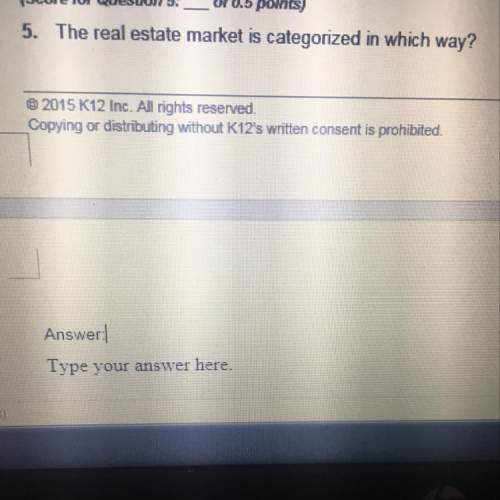
Business, 20.06.2020 16:57 crzyemo865
You are trying to decide how much to save for retirement. Assume you plan to save $5000 per year with the first investment made one year from now. You think you can earn 10% per year on your investments and you plan to retire in 43 years, immediately after making your last $5000 investment.
a. How much will you have in your retirement account on the day you retire?
b. If, instead of investing $5000 per year, you wanted to make one lump-sum invest- ment today for your retirement that will result in the same retirement saving, how much would that lump sum need to be?
c. If you hope to live for 20 years in retirement, how much can you withdraw every year in retirement (starting one year after retirement) so that you will just exhaust your savings with the 20th withdrawal (assume your savings will continue to earn 10% in retirement)?
d. If, instead, you decide to withdraw $300,000 per year in retirement (again with the first withdrawal one year after retiring), how many years will it take until you exhaust your savings? (Use trial-and-error, a financial calculator: solve for "N," or Excel: function NPER)
e. Assuming the most you can afford to save is $1000 per year, but you want to retire with $1 million in your investment account, how high of a return do you need to earn on your investments? (Use trial-and-error, a financial calculator: solve for the interest rate, or Excel: function RATE)

Answers: 2


Another question on Business

Business, 21.06.2019 17:30
You want to paint your room yellow, so you get some samples at the paint store. when you hold the sample against your white wall, it looks different from the way it looks against the green curtain. a psychologist would attribute this to perceptual constancy. visual paradoxes. contrast effects. threshold differences.
Answers: 3

Business, 22.06.2019 11:00
The following transactions occurred during july: received $1,000 cash for services provided to a customer during july. received $4,000 cash investment from bob johnson, the owner of the business received $850 from a customer in partial payment of his account receivable which arose from sales in june. provided services to a customer on credit, $475. borrowed $7,000 from the bank by signing a promissory note. received $1,350 cash from a customer for services to be rendered next year. what was the amount of revenue for july?
Answers: 1

Business, 22.06.2019 17:00
Aaron corporation, which has only one product, has provided the following data concerning its most recent month of operations: selling price $ 102 units in beginning inventory 0 units produced 4,900 units sold 4,260 units in ending inventory 640 variable costs per unit: direct materials $ 20 direct labor $ 41 variable manufacturing overhead $ 5 variable selling and administrative expense $ 4 fixed costs: fixed manufacturing overhead $ 64,200 fixed selling and administrative expense $ 2,900 the total contribution margin for the month under variable costing is:
Answers: 2

Business, 23.06.2019 07:50
Your company is starting a new r& d initiative: a development of a new drug that dramatically reduces the addiction to smoking. the expert team estimates the probability of developing the drug succesfully at 60% and a chance of losing the investment of 40%. if the project is successful, your company would earn profits (after deducting the investment) of 9,000 (thousand usd). if the development is unsuccessful, the whole investment will be lost -1,000 (thousand usd). your company's risk preference is given by the expected utility function: u(x) v1000 +x, where x is the monetary outcome of a project. calculate the expected profit of the project . calculate the expected utility of the project . find the certainty equivalent of this r& d initiative . find the risk premium of this r& d initiative e is the company risk-averse, risk-loving or risk-neutral? why do you think so?
Answers: 3
You know the right answer?
You are trying to decide how much to save for retirement. Assume you plan to save $5000 per year wit...
Questions



Medicine, 25.09.2021 14:00

Business, 25.09.2021 14:00

Mathematics, 25.09.2021 14:00

History, 25.09.2021 14:00

History, 25.09.2021 14:00

Biology, 25.09.2021 14:00


Mathematics, 25.09.2021 14:00

Biology, 25.09.2021 14:00


Mathematics, 25.09.2021 14:00


Mathematics, 25.09.2021 14:00

Mathematics, 25.09.2021 14:00


History, 25.09.2021 14:00

Chemistry, 25.09.2021 14:00




